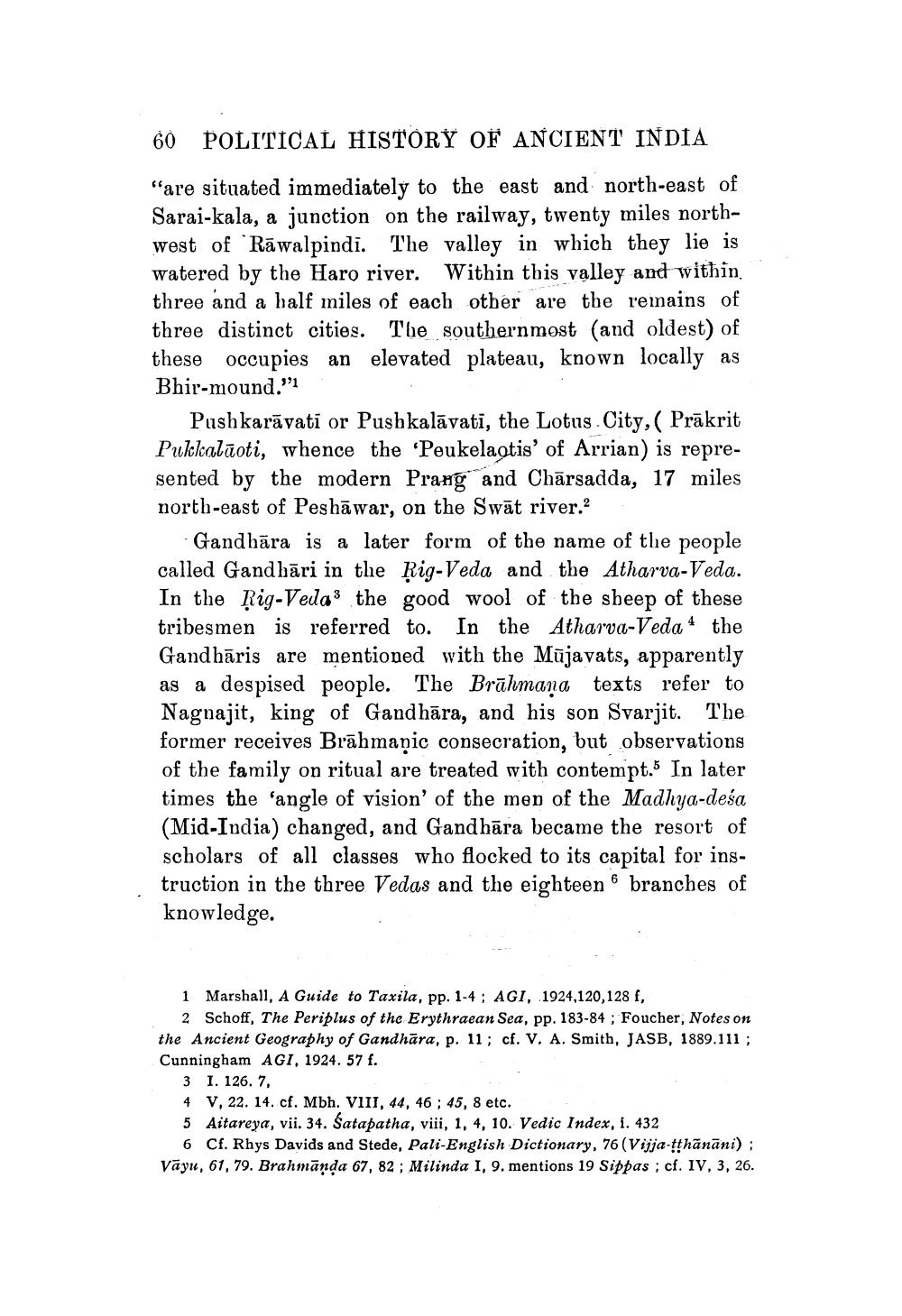________________
60 POLITICAL HISTORY OF ANCIENT INDIA “are situated immediately to the east and north-east of Sarai-kala, a junction on the railway, twenty miles northwest of Rāwalpindi. The valley in which they lie is watered by the Haro river. Within this valley and within three and a half miles of each other are the remains of three distinct cities. The southernmost (and oldest) of these occupies an elevated plateau, known locally as Bhir-mound.”
Pushkarāvati or Pushkalāvati, the Lotus City, ( Prākrit Pulclcalāoti, whence the Peukelaotis' of Arrian) is represented by the modern Prang and Chārsadda, 17 miles north-east of Peshāwar, on the Swāt river.2
Gandhāra is a later form of the name of the people called Gandbāri in the Rig Veda and the Atharva-Veda. In the ħig-Vedas the good wool of the sheep of these tribesmen is referred to. In the Atharva-Veda 4 the Gandhāris are mentioned with the Mūjavats, apparently as a despised people. The Brāhmana texts refer to Nagnajit, king of Gandhāra, and his son Svarjit. The former receives Brāhmaṇic consecration, but observations of the family on ritual are treated with contempt. In later times the 'angle of vision of the men of the Madhya-deśa (Mid-India) changed, and Gandhāra became the resort of scholars of all classes who flocked to its capital for instruction in the three Vedas and the eighteen branches of knowledge.
1 Marshall, A Guide to Taxila, pp. 1-4; AGI, 1924,120,128 f,
2 Schoff, The Periplus of the Erythraean Sea, pp. 183-84 ; Foucher, Notes on the Ancient Geography of Gandhāra, p. 11; cf. V. A. Smith, JASB, 1889.111 ; Cunningham AGI, 1924. 57 f.
3 I. 126. 7, 4 V, 22. 14. cf. Mbh. VIII, 44, 46 ; 45, 8 etc. 5 Aitareya, vii. 34. Satapatha, viii, 1, 4, 10. Vedic Index, i. 432
6 Cf. Rhys Davids and Stede, Pali-English Dictionary, 76 (Vijja-tthānāni); Vaytv, 61, 79. Brahmanda 67, 82 ; Milinda I, 9. mentions 19 Sibbas ; cf. IV, 3, 26.




